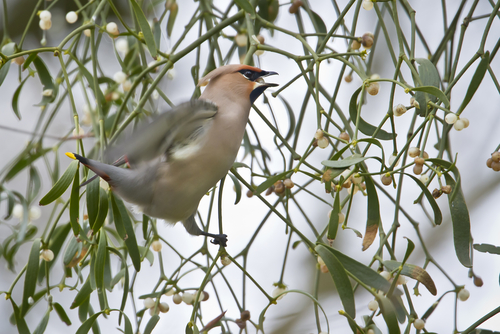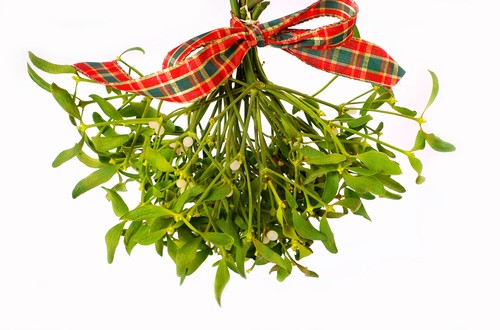Meet Me Under the Mistletoe
by Caroline Holmes, ACES Extension Daily
The holiday season is before us and soon men and women across the globe will be asked to meet their special someone “under the mistletoe.”
However, many of those individuals do not know the science or history behind the long tradition and romantic symbol of mistletoe.
Mistletoes can be found across the globe and there are more than 200 species of the semi-parasitic shrubs. Alabama Cooperative Extension’s Cullman County Coordinator, Tony Glover, attributes the global awareness of mistletoe to its association with Christmas.
“These species are found worldwide which lends the plant to Christmas use,” said Glover.
All species of mistletoe are semi-parasitic and grow into a host tree using the tree’s nutrients as well as what it produces on its own. They do not kill their hosts directly, but may weaken the hosts and lead to death in the future.
Mistletoe produces yellow flowers that bloom during fall and winter.
“The familiar white berries begin to form soon after pollination and resemble little packets of glue around tiny indigestible seeds,” described Glover.
The berries have a poisonous quality that is potentially lethal to humans, but birds are immune to the toxicity.
“If you use mistletoe in your home remove the seeds for safety purposes,” said Glover.
“The immunity of birds to mistletoe’s poisonous qualities is essential to the welfare of the plant,” explained Glover. “The dispersal and propagation of mistletoe is largely dependent on birds that eat berries but do not digest the seeds.”
Birds spread the seed through ingesting and passing the seeds through their droppings. It is suggested that seeds have a higher rate of survival if the seeds are deposited on the same tree species as the parent plant’s tree.
As a result of the integral role played by birds in the dispersal of the seeds of mistletoe, it once was believed that bird droppings spontaneously formed mistletoe.
Meaning of Mistletoe
 The belief that bird droppings formed mistletoe led to the name mistletoe that directly translates as “dung-on-a-twig” in English.
The belief that bird droppings formed mistletoe led to the name mistletoe that directly translates as “dung-on-a-twig” in English.
“I think we should stick with the name mistletoe because ‘meet me under the dung-on-a-twig’ just doesn’t set the right festive mood,” said Glover.
The use of mistletoe as a romantic symbol did not arise until the early 16th century. William Irving wrote in 1520 that young men should pick a berry each time he kisses a girl under the mistletoe.
The tradition of kissing under the mistletoe still exists today during the holiday season. However, the use of berries is no longer included.
When you find yourself under the mistletoe this Christmas season, you can impress your friends with your new found knowledge, or just keep your mouth shut and pucker up.
Photo Credit: shutterstock.com
Extension Daily is the official blog of the Alabama Cooperative Extension System (ACES). Reprinted with permission.



